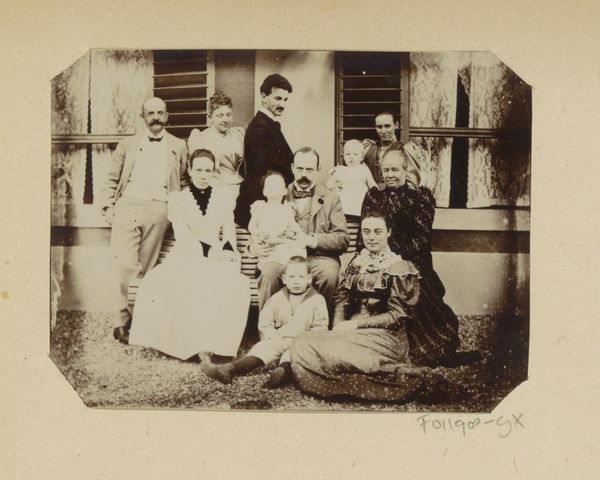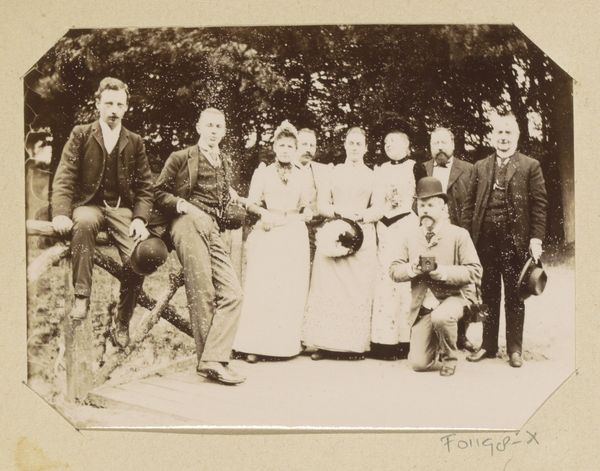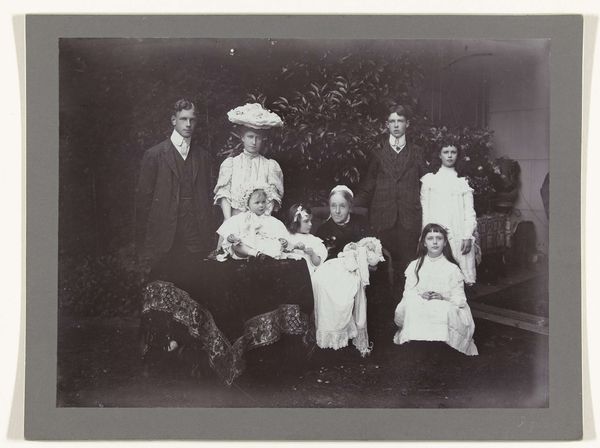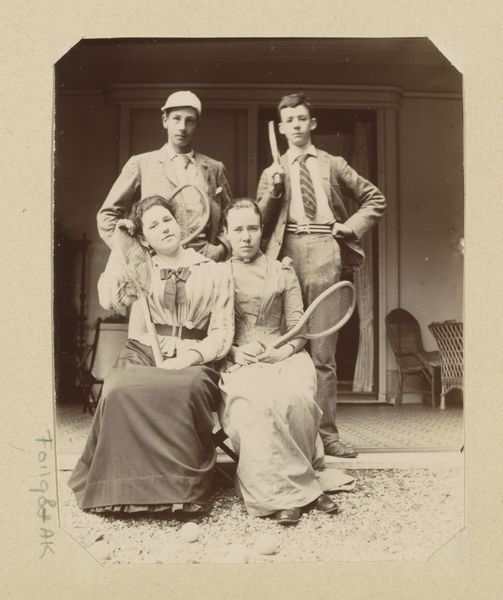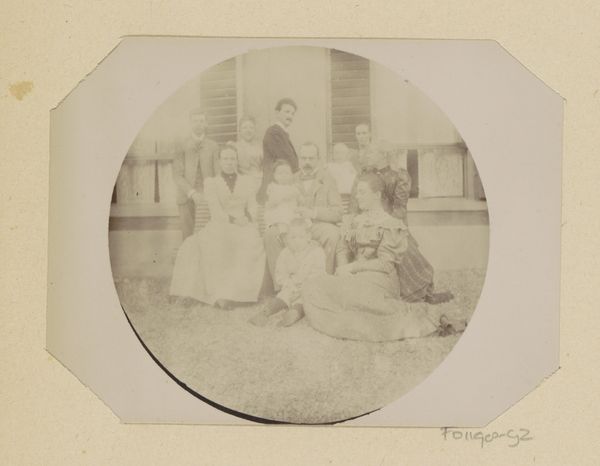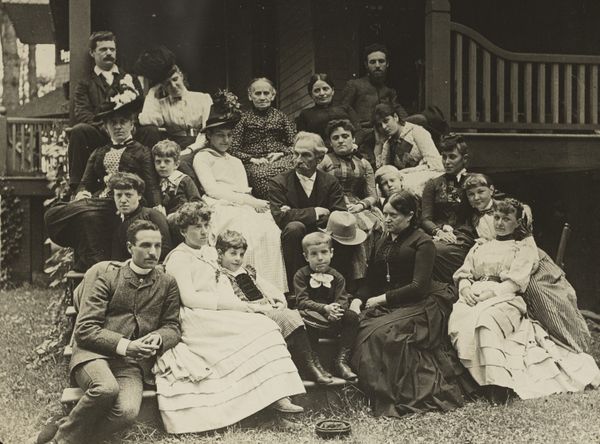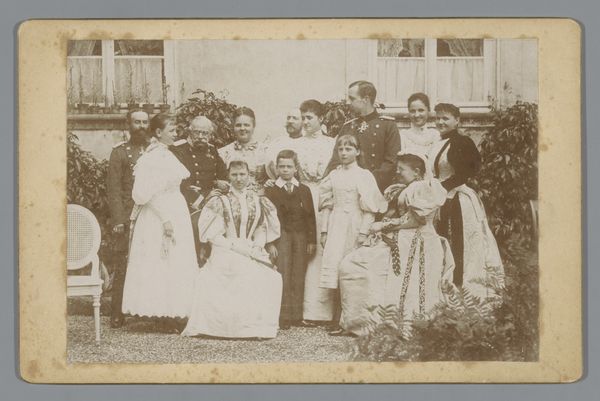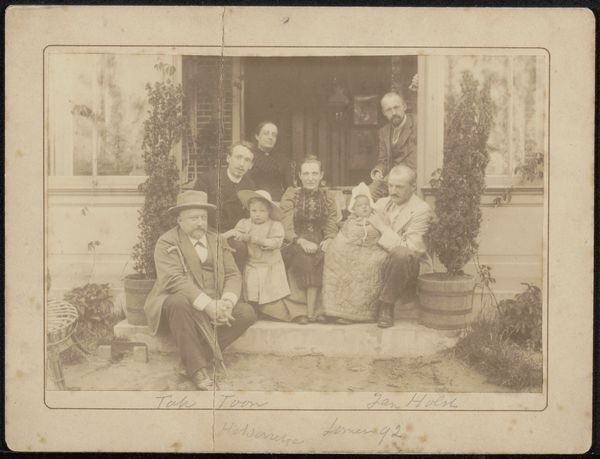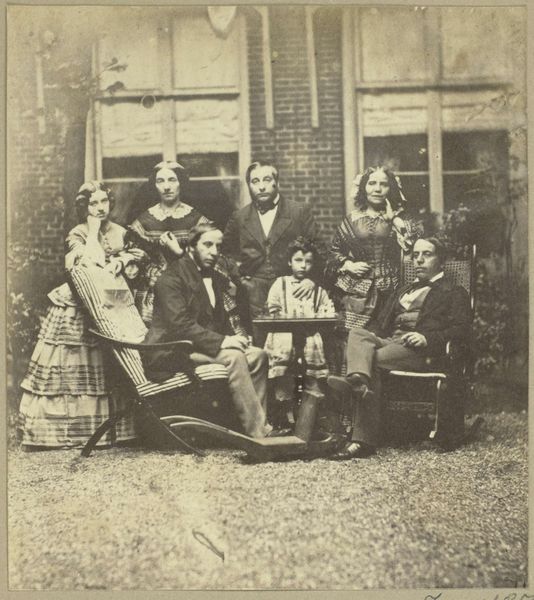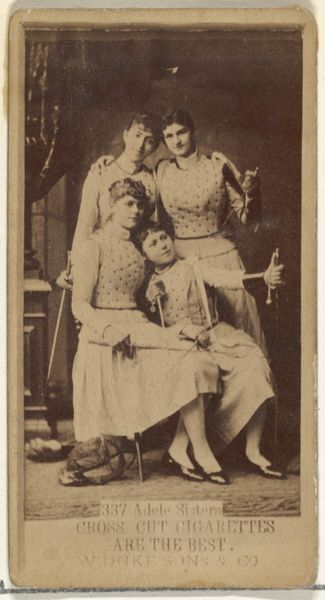
Groepsportret met hond, in het midden Lucia Wilhelmina Piek-Jolles, linksboven Cato Piek naast Louise Maria Piek-Fellinger 1889 - 1893
0:00
0:00
photography
#
dog
#
archive photography
#
photography
#
historical photography
#
19th century
#
genre-painting
Dimensions: height 100 mm, width 74 mm
Copyright: Rijks Museum: Open Domain
Editor: So this is a photographic print, a "Groepsportret met hond" or group portrait with dog, placing Lucia Wilhelmina Piek-Jolles at its center, accompanied by Cato Piek and Louise Maria Piek-Fellinger from around 1889-1893. It's a fascinating snapshot of a family from a bygone era... but also feels strangely posed and artificial. What’s your perspective on it? Curator: Immediately, I consider the material production and distribution of photographs during this era. Photography had become more accessible, influencing class dynamics and social representation. Who could afford to have a family portrait taken, and what were the specific garments worn? Note also the labor of photographers and the emergence of studios as spaces of both art and commerce. Editor: That's a great point; the clothing does seem very deliberate, almost performative. How does that play into understanding the image's purpose? Curator: Look closely at the composition – the placement of each individual and the subtle indications of social status evident in their clothing. Each fabric, button, and accessory tells a story of access to resources and the performance of identity. Think of how these details affect our reading of their relationships. Editor: I didn't initially consider the dog as part of the materiality, but of course, even its breed signals a certain lifestyle. Curator: Exactly! Consider also how mass reproduction and evolving photographic techniques affect notions of authorship and originality in this period. This wasn’t a unique painting made by a recognized "master," but a produced, replicable image impacting culture in a very different manner. What happens to the traditional "art" object in an age of mass production? Editor: It sounds like there's so much more here than initially meets the eye, almost like reading the photo as an artifact of its time rather than just an image. Curator: Precisely. By analyzing the photograph through the lens of its material conditions and cultural context, we uncover layered meanings beyond a simple family portrait. It's a complex interplay of people, objects, and economic factors, isn't it?
Comments
No comments
Be the first to comment and join the conversation on the ultimate creative platform.
